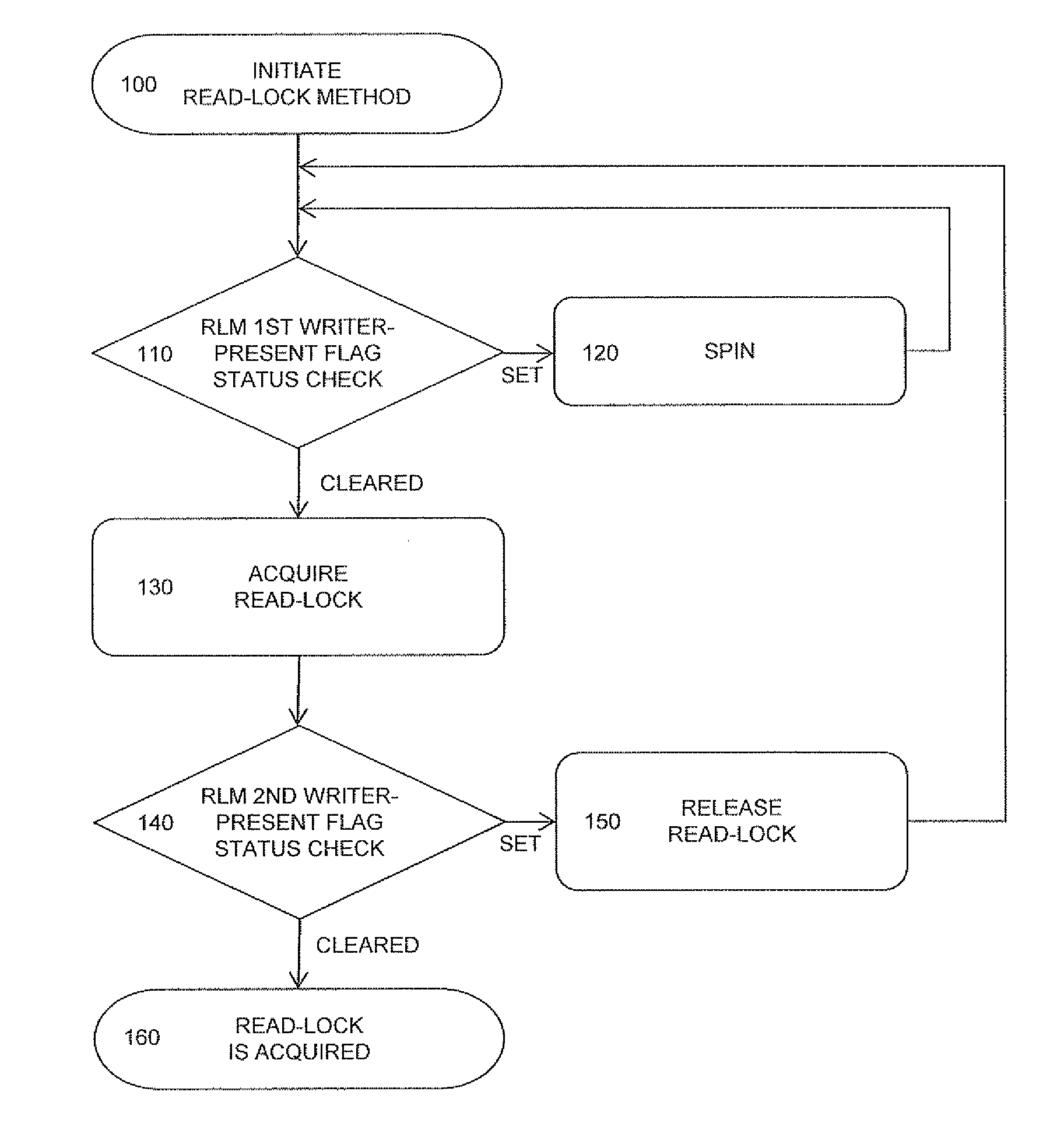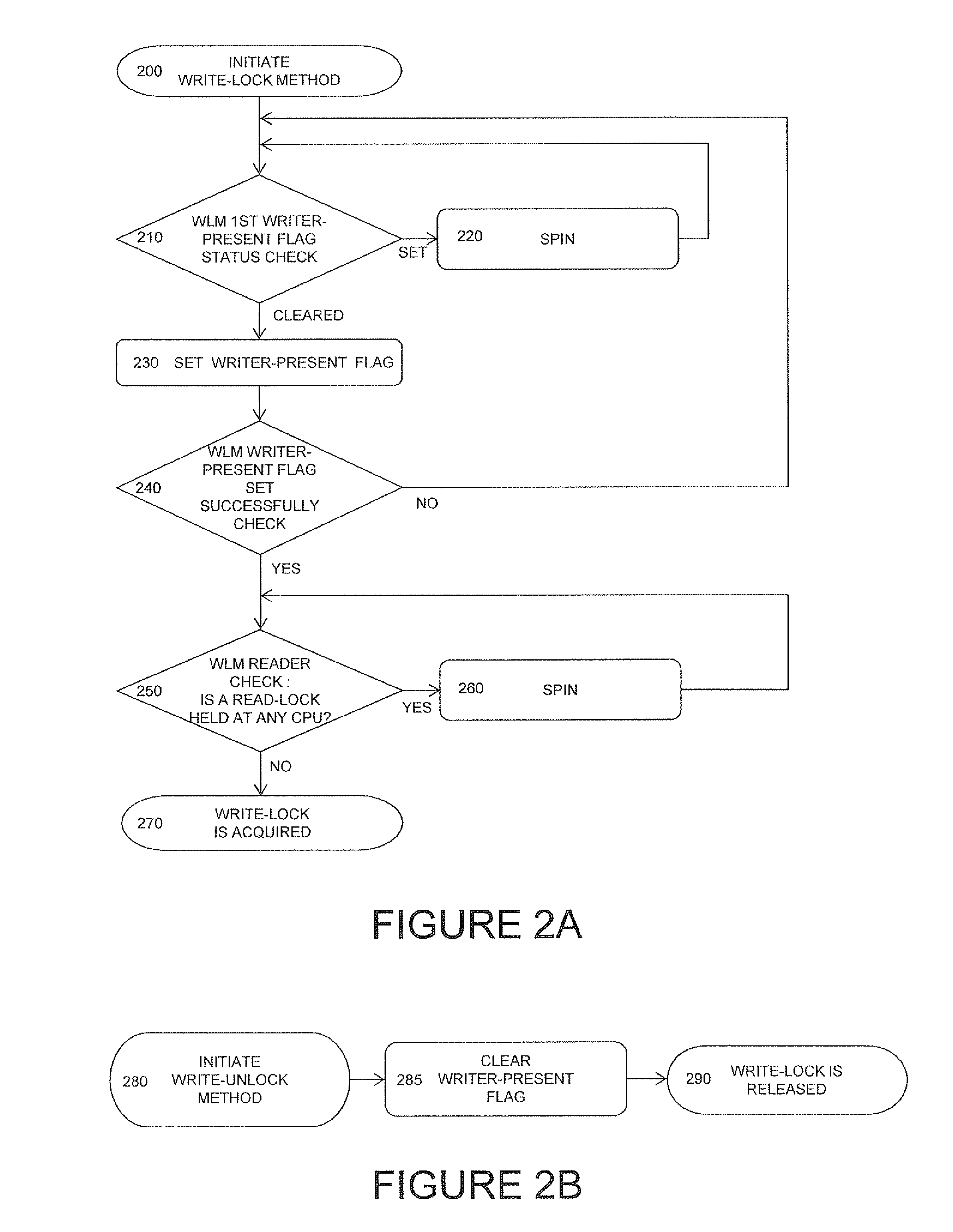Optimization of Data Locks for Improved Write Lock Performance and CPU Cache usage in Mulit Core Architectures
a data lock and write lock technology, applied in the field of operating system kernels, can solve the problems of many cache invalidations, simple operations such as the c++ command of “i++” (increasing the variable “i”), and the implementation of read-write locks fails miserably
- Summary
- Abstract
- Description
- Claims
- Application Information
AI Technical Summary
Benefits of technology
Problems solved by technology
Method used
Image
Examples
Embodiment Construction
—FIGS. 1A-3
[0049]The principles and operation of a present embodiment may be better understood with reference to the figures and the accompanying description.
[0050]A present invention relates to an optimization in how locks are acquired, with significant improvements in performance over conventional techniques. The present embodiment includes the following features:[0051]1. A read-lock method, used by one or more readers for each of the readers to acquire a read-lock. Acquisition of one or more read-locks blocks writers from acquiring a write-lock until the readers are finished reading and all read-locks are released (i.e., the read-lock method implementation used by each of the readers releases the read-lock; and[0052]2. A write-lock method, used by a writer to acquire a write-lock. Acquisition of the write-lock blocks new readers from acquiring any read-locks and new writers from acquiring the write-lock until the current writer is finished writing and the write-lock method releas...
PUM
 Login to View More
Login to View More Abstract
Description
Claims
Application Information
 Login to View More
Login to View More - R&D
- Intellectual Property
- Life Sciences
- Materials
- Tech Scout
- Unparalleled Data Quality
- Higher Quality Content
- 60% Fewer Hallucinations
Browse by: Latest US Patents, China's latest patents, Technical Efficacy Thesaurus, Application Domain, Technology Topic, Popular Technical Reports.
© 2025 PatSnap. All rights reserved.Legal|Privacy policy|Modern Slavery Act Transparency Statement|Sitemap|About US| Contact US: help@patsnap.com



